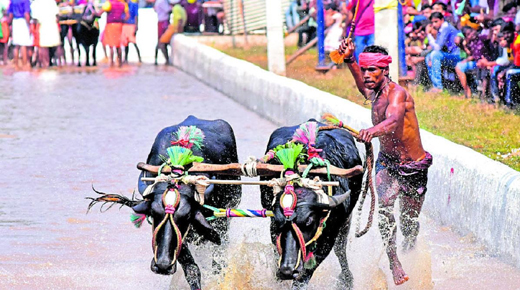
PETA report to SC on Kambala, points to cruelty
Mangalore Today News Network
Mangaluru, Oct 22, 2019: The People for the Ethical Treatment of Animals (PETA) submitted to the SC its investigation report on October 21, Monday containing videos and photos before the Supreme Court based on field investigation on four Kambala events held in various parts of Karnataka, as part of its petition seeking to overturn the Prevention of Cruelty to Animals (Karnataka Second Amendment) Act, 2017, which allowed organising of such races in the state.

The report alleged that Kambala, traditional bull buffalo race held in Coastal Karnataka, involved acts of cruelty on animals which were not anatomically or physiologically suited for racing.
PETA claimed its investigation on events held in Moodabidri, Baradi Beedu near Udupi, Mangaluru, and Thiruvail, “reluctant, scared bull buffaloes were whacked repeatedly with bare hands, slapped in the face, kicked, poked and hit with wooden sticks, dragged to the starting point by groups of five or six people, and shouted at.”
Animals were kept in position at the starting point through the violent pulling, yanking, and rough handling of nose ropes. Animals which were visibly in excruciating pain tried to soothe their nostrils by licking them, the PETA said. Though Kamabla organisers claimed that during Kambala season buffaloes would be hit only with wooden sticks covered with foam or fibre, the animals were actually struck with uncoated sticks, the PETA claimed.
“All four Kambala events investigated by PETA India highlight how worthless the state amendment which allows these races is in protecting buffaloes from harm,” said PETA India Dr Manilal Valliyate said.
“Cruelty is inherent in Kambala events, as buffalo bulls aren’t anatomically or physiologically suited for racing and no amount of regulation can change this scientific fact,” the NGO said.
Many buffaloes which finished the race were frothing in the mouth and salivating heavily and displayed increased respiratory rates. Two or three tight-fitting 2- to 2.5-centimetre-thick nose ropes were inserted through the nasal septum of many buffalo bulls, the report said. It is to be seen and awaited how the SC will view and act on the report in due time.